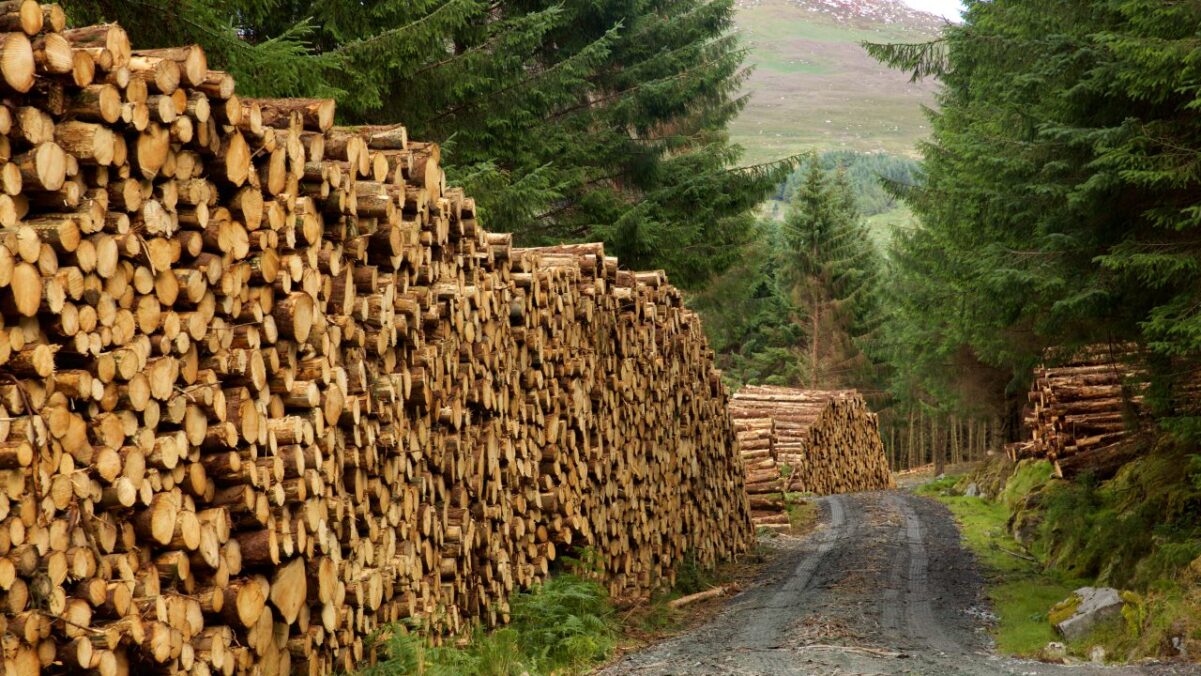
Ukraine’s Forestry Sector 2025: Regional Imbalances, Dynamics, and Growth Prospects
Forestry and logging remain key components of the Ukrainian economy. However, business development in this sector heavily depends on regional specifics from access to forest resources to the impact of hostilities and the level of infrastructure.
The largest number of companies and sole proprietors operating in the forestry sector are traditionally concentrated in regions with significant natural resources, developed infrastructure, and a history of woodworking clusters. Zhytomyr (1,157), Rivne (1,151), Ivano-Frankivsk (1,074), Vinnytsia (1,058), and Zakarpattia (976) regions these are the areas with the most business entities. In these regions, a strong resource base is complemented by convenient location, logistics, major woodworking enterprises, and investment activity.
At the same time, there is the least business activity in the forestry sector in Ternopil (291), Kirovohrad (398), Mykolaiv (461), Poltava (510), and Sumy (578) regions. The main reasons are limited forest areas, the absence of processing facilities, proximity to the war zone, and insufficient demand.
Legal Entities: Capital Focus and the Carpathian Factor
Among registered companies, the leaders are Kyiv, Kyiv region, and Zakarpattia region each with 311 legal entities. Here, not only natural conditions matter, but also a favorable business climate, logistical advantages, and access to international markets. Next are Lviv (267) and Ivano-Frankivsk (230) regions.
The smallest number of companies are registered in Kirovohrad (55), Ternopil (69), Poltava (92), Sumy (97), and Mykolaiv (99) regions. In these areas, a weak resource base is combined with high risks due to the war.
The Role of Sole Proprietors: The Main Driver of Activity
Sole proprietors remain the driving force of the forestry sector. The leaders in the number of sole proprietors are Rivne (980), Zhytomyr (971), Vinnytsia (886), Ivano-Frankivsk (844), and Khmelnytskyi (696) regions. These regions demonstrate high entrepreneurial activity, focus on local resources, and export orientation.
At the same time, there are the fewest sole proprietors working in Ternopil (222), Kyiv (292), Kirovohrad (343), Mykolaiv (362), and Poltava (418) regions. The reason is either the small size of forest areas or a high level of urbanization, as in the capital.
Development Dynamics: From Stagnation to Growth Phase
Analysts note the gradual recovery of the sector after a period of decline. “The forestry sector of Ukraine shows signs of recovery and is entering a growth phase.” In 2024, the number of new sole proprietors in logging remained stable, but at the end of the year, there was a drop in registrations. Since the beginning of 2025, the situation has started to change: in the second quarter, there was a doubling of the number of new sole proprietors compared to the previous quarter. Meanwhile, the number of sole proprietors ceasing activity remained stable.
This gradual increase indicates optimistic prospects. Entrepreneurs are increasingly investing in the development of the raw material base, woodworking, and export-oriented processes, which may become a new driver of economic growth at the regional level.
Financial Results: New Records Amid Challenges
The year 2024 was significant for the forestry sector: “at the end of 2024, the sector reached a record net income of UAH 23.7 billion, continuing to implement digitization projects and invest in forestry, despite temporary occupation and hostilities.”
The sector is not only reviving entrepreneurial activity but also gradually introducing modern technologies, updating business models, and entering new markets.
Ukraine’s forestry sector is moving from the stabilization stage to gradual growth. Competition among regions is driving investment, and the record number of sole proprietors and legal entities shows that business trust in the sector is returning, even during wartime. The leadership of northern and western regions remains unchanged, but it is entrepreneurial activity and the introduction of new technologies that may become decisive for the future development of the sector. The optimistic dynamics open up prospects for expanding exports, modernizing production, and strengthening the regional economy thanks to forest resources.














